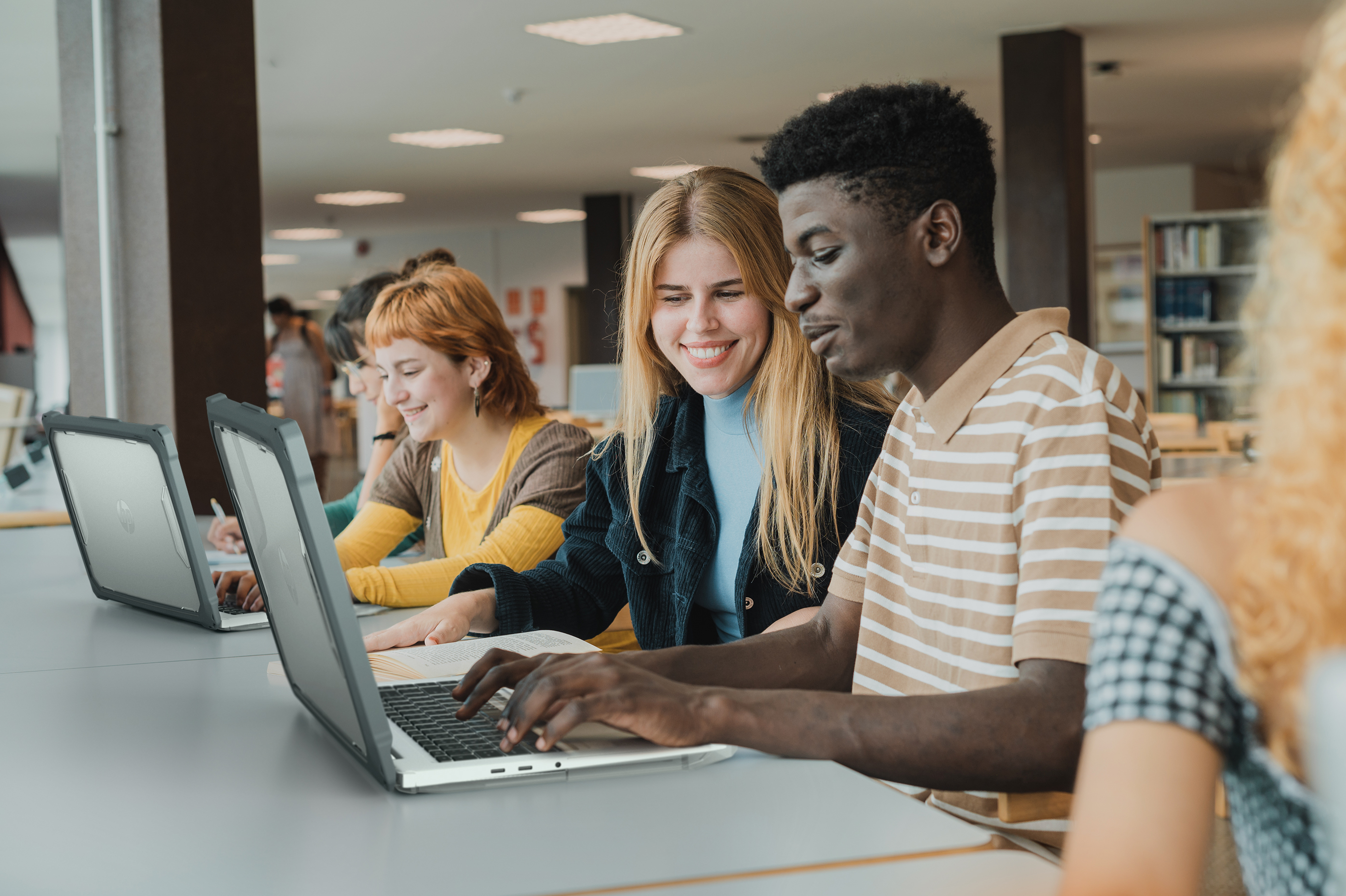
Technology is consistently transforming the way students learn, collaborate, and engage with their coursework. In today’s classrooms, educational technology, commonly abbreviated as EdTech, is more than just an add-on. In fact, it’s a core part of the learning experience. When used thoughtfully, it can help students take ownership of their education, connect with peers, and prepare for a technology-driven future.
From interactive lessons to digital collaboration tools, EdTech provides new opportunities for teachers to make lessons more engaging, inclusive, and relevant. Below, we’ll explore seven strategies to help educators maximize the benefits of EdTech while ensuring devices are protected, accessible, and ready to go.
1. Make Learning Interactive with Digital Tools
Passive learning is a thing of the past. Platforms like Nearpod, Pear Deck, and Kahoot! turn traditional lectures into dynamic experiences, allowing students to respond to questions in real time, work through problem-solving activities, and see class results instantly.
Why it works:
• Immediate feedback keeps students engaged
• Real-time polling and quizzes make lessons participatory
• Data helps teachers quickly identify who needs extra support
2. Foster Collaboration with Shared Digital Workspaces
Collaboration builds communication and critical thinking skills. Tools like Google Workspace for Education, Microsoft Teams, and Padlet allow students to work together on projects from anywhere—whether they’re in the classroom or learning remotely.
Ideas for classroom use:
• Group research projects with shared Google Docs
• Collaborative slide decks for student presentations
• Peer review of essays and designs in real time
3. Integrate Gamification to Boost Motivation
Gamification — using game-based elements in non-game contexts — makes learning fun while encouraging persistence. Digital platforms like Classcraft and Quizizz let students earn points, level up, and compete in a friendly way, all while mastering key concepts.
Benefits of gamification:
• Encourages participation from reluctant learners
• Rewards effort and improvement, not just correct answers
• Builds a sense of community through team play
4. Bring Lessons to Life with Multimedia Content
Videos, podcasts, and interactive simulations can make abstract concepts concrete. Imagine a biology class where students explore the human circulatory system in 3D, or a history lesson enhanced with primary source video footage.
Ideas for implementation:
• Use Edpuzzle to embed questions into video lessons
• Explore science with interactive simulations from PhET
• Offer audio versions of readings for greater accessibility
5. Use EdTech for Personalized Learning
Every student learns differently, and adaptive learning platforms like DreamBox, IXL, and Khan Academy can tailor content to each learner’s pace and skill level. These tools help teachers meet individual needs without sacrificing whole-class progress.
Advantages of adaptive platforms:
• Identifies gaps and strengths for targeted support
• Lets advanced learners move ahead without waiting
• Reduces frustration for students who need more time
6. Promote Student Creativity with Digital Creation Tools
EdTech isn’t just for consuming information; it’s also for creating it. Platforms like Canva, Book Creator, and Adobe Express give students the ability to produce professional-looking presentations, videos, podcasts, and digital books.
Why creativity matters in EdTech:
• Encourages ownership of the learning process
• Builds digital literacy and design skills
• Makes learning visible and shareable
7. Support Real-World Learning with EdTech
The skills students develop through technology-rich projects often mirror the demands of the modern workplace. EdTech can connect them with global experts, real-world data, and problem-solving scenarios that make learning relevant.
Ideas for real-world integration:
• Virtual field trips through Google Arts & Culture
• Data analysis using spreadsheets from authentic sources
• Interviews with professionals via secure video conferencing
Best Practices for Implementing EdTech in the Classroom
Implementing EdTech successfully isn’t just about picking the right tools. It’s also about building a supportive environment for both students and teachers. Here are some key considerations:
Provide training and ongoing support: Teachers need time to learn, experiment, and refine their use of technology. Professional development and peer-to-peer learning communities can make a big difference.
Set clear expectations: Students should understand how, when, and why they’re using technology. Establishing norms for device use promotes focus and minimizes distractions.
Prioritize equity and access: All students should have access to the devices and internet connections they need to fully participate. This may include lending programs or community partnerships.
Ensure device readiness: Protective cases, charging solutions, and organized storage help keep devices functional and available—making EdTech a reliable part of learning rather than a source of frustration.
Incorporating EdTech into the classroom isn’t just about using the latest gadgets. It’s about intentionally leveraging technology to make learning more engaging, inclusive, and future-focused. From gamified lessons to personalized learning platforms, EdTech offers countless opportunities to boost student engagement.


